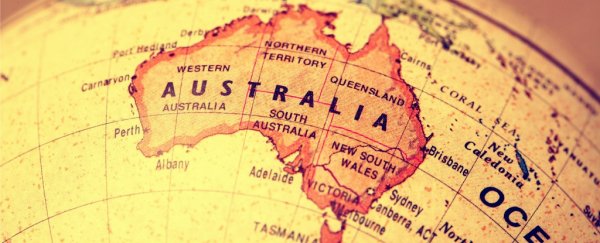Geologists tend to agree that, billions of years ago, the configuration of the continents was very different. How exactly they all fit together and when is a bit more of a puzzle, the pieces of which can be put together by studying rocks and fossils.
Now researchers have found a series of rocks that show something surprising: part of Australia could have once been connected to part of Canada on the North American continent, around 1.7 billion years ago.
Actually, the discovery that the two continents were once connected isn't hugely surprising. Speculation about such a connection has existed since the late 1970s, when a paper proposed a connection dating back to the continent of Rodinia, around 1.13 billion years ago. However, an exact time and location for the connection has remained under debate.
Found in Georgetown, a small town of just a few hundred people in the north east of Australia, the rocks are unlike other rocks on the Australian continent.
Instead, they show similarities to ancient rocks found in Canada, in the exposed section of the continental crust called the Canadian Shield.
This unexpected finding, according to researchers at Curtin University, Monash University and the Geological Survey of Queensland in Australia, reveals something about the composition of the ancient supercontinent Nuna.
"Our research shows that about 1.7 billion years ago, Georgetown rocks were deposited into a shallow sea when the region was part of North America. Georgetown then broke away from North America and collided with the Mount Isa region of northern Australia around 100 million years later," said Curtin PhD student and lead researcher Adam Nordsvan.
"This was a critical part of global continental reorganisation when almost all continents on Earth assembled to form the supercontinent called Nuna."
The last time the continents were close to one another was the major supercontinent known as Pangea, which broke apart around 175 million years ago.
However, before Pangea, the planet went through a number of supercontinent configurations - one of which was Nuna, also called Columbia, which existed from around 2.5 billion to 1.5 billion years ago.
The team reached its conclusion by examining new sedimentological field data, and new and existing geochronological data from both Georgetown and Mount Isa, another remote town in north east Australia, and comparing it to rocks from Canada.
According to the research, when Nuna started breaking up, the Georgetown area remained permanently stuck to Australia.
This, the researchers said in their paper, challenges the current model that suggests the Georgetown region was part of the continent that would become Australia prior to 1.7 billion years ago.
The research also found new evidence that Georgetown and Mount Isa mountain ranges were formed when the two regions collided.
"Ongoing research by our team shows that this mountain belt, in contrast to the Himalayas, would not have been very high, suggesting the final continental assembling process that led to the formation of the supercontinent Nuna was not a hard collision like India's recent collision with Asia," said co-author Zheng-Xiang Li.
"This new finding is a key step in understanding how Earth's first supercontinent Nuna may have formed, a subject still being pursued by our multidisciplinary team here at Curtin University."
The research has been published in the journal Geology.
